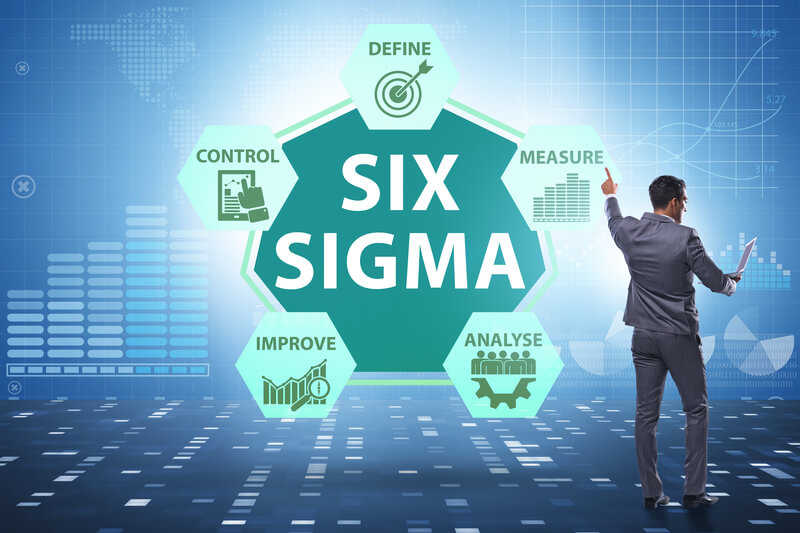Lexington Residents - Learn Lean Six Sigma’s History Here
Contact Us

Many people think that Lean Six Sigma History is easy to understand and absorb. However, it is difficult to know every detail of the history of Lean Six Sigma because there are many methodologies, more historical periods, and more studies to keep in mind to know how this method came to be part of the best options for businesses and even individuals today. At Lean Six Sigma Curriculum for Lexington High School Students of Kentucky, we help you go over all the details and make sure that before you jump to this methodology, you know everything about it from top to bottom, so you know how it benefits you as a company or practitioner.
LSS is a process that reduces waste, improves processes, and achieves continuous improvement. It also works towards increasing revenue and reducing costs.
This is all about how companies need to work around their processes and focus on getting better results while utilizing fewer resources.
This methodology will focus on how they can identify and manage issues and problems and then implement solutions to stop them from happening again.
LSS was established to solve the problem that American companies were facing in the late 80s as Japanese companies enjoyed dominance in production and markets thanks to their superior products. They also ensured that waste and costs were reduced.
Japan used many different methods, and Kaizen is the most popular one among them. This system focuses on customer satisfaction and waste reduction.
They were able to achieve exceptional results in manufacturing thanks to this approach. This led to an increase in the demand for LSS, or more like the creation of a methodology that could help compete with what Japan was doing.
Japan Has More Influences than You Think
It is important to know how other methodologies influenced the idea for Sigma. Also, how people came up with the conclusion that LSS was overall a good idea.
There are always many principles and ideas that influence the creation of a methodology, so don’t feel like this came out of nowhere.
There are some methods you should keep in mind when trying to understand LSS:
- Kanban method for workflow management.
- Value stream mapping for optimizing process delivery.
- Kaizen for customer satisfaction and waste reduction while boosting employee participation.
However, although these Japanese methodologies played their part for Sigma, two main methods are the ones that made LSS possible in terms of its creation; these are Six Sigma and Lean. Both methodologies have a focus but different approaches for improving processes and achieving continuous improvement.
Six Sigma, Lean, and LSS: How All Comes Together
Toyota developed Lean in the late 1940s as a way to reduce non-value-adding activities, improve performance and take care of all types and forms of waste.
Lean management’s core values include:
- Your top priorities are customer service and satisfaction.
- All waste from work must be minimized.
- Continuous improvement and keeping your clients in view.
Toyota Production Systems (TPS) is where Lean was first established. It is also the place where Lean was first used, thanks to Japanese Taiichi Okno.
According to some data, Lean also draws on Henry Ford’s innovations and Business Process Redesign.

Although the methodology is structured in a certain way, it can be modified to suit your specific needs and goals. Regardless, we encourage you to keep these principles in mind:
- Lean begins with determining the customer’s added value.
- Value processes and cycles and map them so you can know how the stream flows.
- Recognize and improve waste flow. To expose waste, data is collected and shared.
- Discuss how to reduce waste and keep the customer in mind when creating products, services, or other ideas.
- Employees need to identify areas they can improve and then work together to fix them.
Next, we have 6 Sigma.
Motorola invented the method while General Electric used it successfully at the time, and when compared to Lean, this one aims to reduce variability in manufacturing processes.
It is based upon the DMAIC framework, which allows processes and wastes to be identified and measured while problems are also defined and root causes will be identified so solutions can be found.
Six Sigma provides managers with the tools and targets to help them create a structured improvement plan. It ensures that they are identifying the root causes of problems and, when solutions are implemented, have a way to control them from the same issues from taking place again.
Where Is LSS Left in This?
Lean Six Sigma was established in the USA, and its origins lie in the fact that Six Sigma was combined with Lean, but it adds more value to fill in the gaps. In the late 80s, American companies were able to compete with Japanese products thanks to its creation and implementation as it would help with:
- Process improvement.
- Waste reduction.
- Solving problems.
- Making sure all talent is used in the right places.
When it comes to the benefits that practitioners receive, it’s a useful addition to any curriculum, as trainees will often be sought after by organizations that require its implementation.
If you are interested in adding the methodology to what you know, Lean Six Sigma Curriculum Pros of Lexington offers equal training and certification for students and business professionals.

